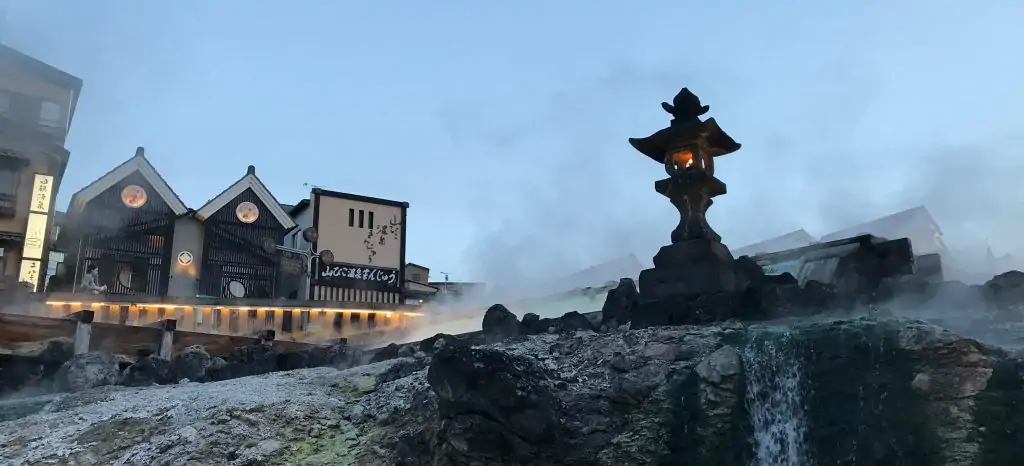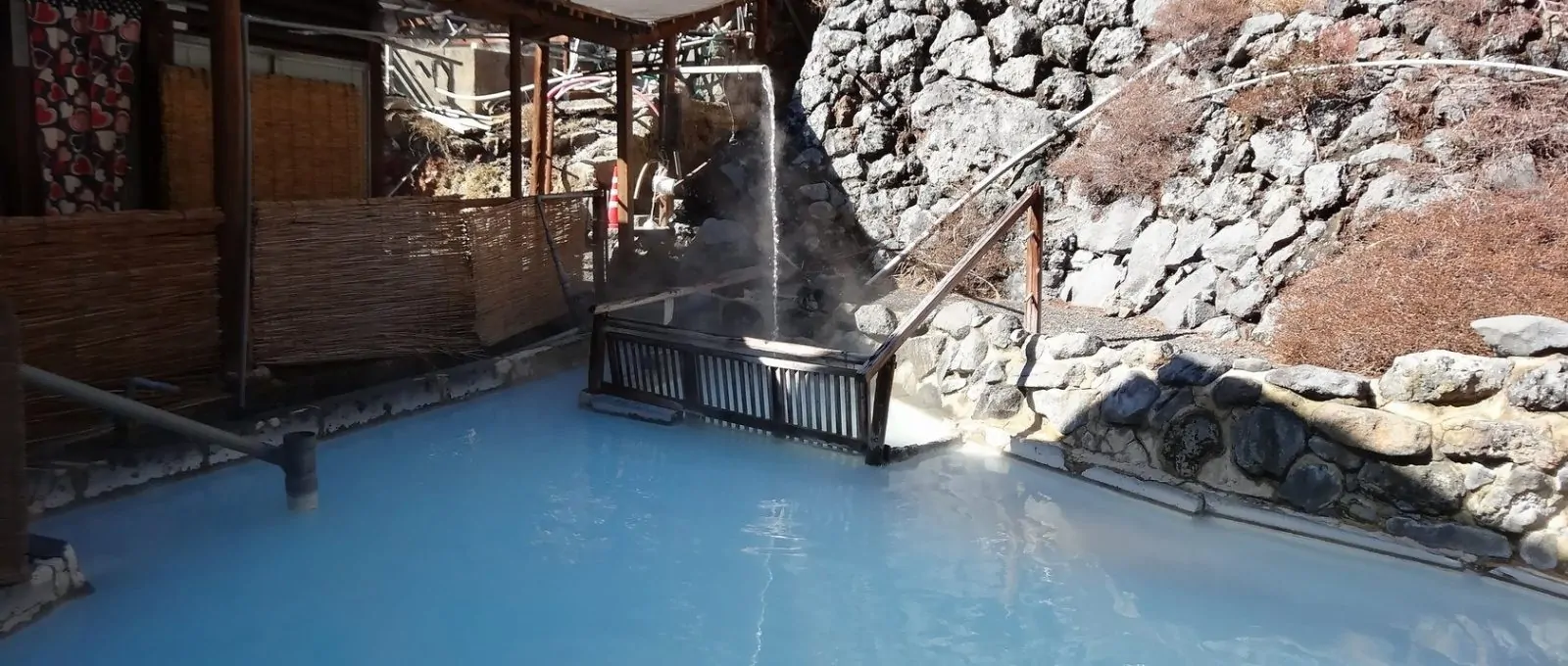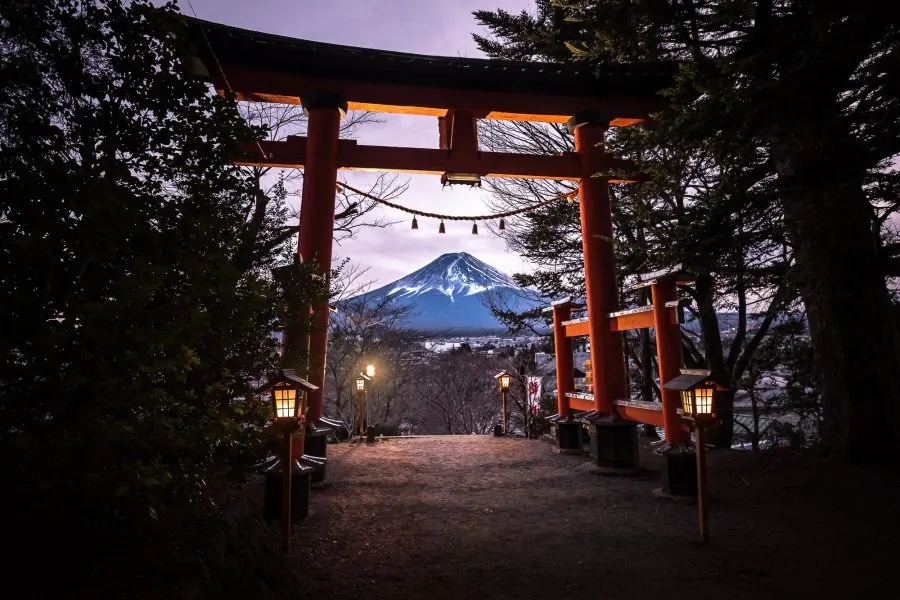Japan is an incredible country with many different and exciting facets. One of the most popular things to do in Japan, especially for foreigners, is to visit one of its hot springs called onsen.
An Onsen is a natural hot spring that Japanese people go to and bathe in naturally hot water to relax or cleanse themselves.
They can be found in many places, but one of the most popular spots for foreigners is an inn called ryokan. At these hotels, you will often find indoor and outdoor pools where you can swim between baths in their hot springs or even have a sauna!
Foreign tourists prefer trying Japanese onsen at a Ryokan because you can have a room with your private onsen to enjoy it as a couple.
What is an onsen?
An onsen is a hot spring in Japan that is fed by natural geothermally heated underground mineral water reservoirs. According to the Hot Springs Act, onsen water is always hot as it must exceed a temperature of at least 25 °C. It’s praised for its health benefits for both the body and mind.
As a volcanically active country, Japan has well over 25,000 natural springs scattered throughout the country. If you were to visit a different one each week, it would take more than a lifetime to see them all!
The difference between Onsen and Sento
A sento is also a public hot bath, but the water does not come from a natural spring; this is regular piped water like the water you get from your sink at home.
You can also come across Super Sento in the land of the rising sun; these are a kind of all-in-one attraction, generally including different types of baths, swimming pools, saunas, and restaurants.
Onsen Etiquette and How to Onsen properly in Japan
In modern-day Japan, the onsen plays an essential role in the culture, and it’s a beloved and luxurious outing for many Japanese to visit a hot spring. Travelers brave enough to dip their feet in should be aware of the onsen etiquette that must be followed when visiting these natural hot springs.
It’s essential to follow these strict rules, or your visit may be cut short or see you banned altogether!
Although it can be daunting for newcomers to overcome the naked aspect of the onsen bath initially, it’s a unique way to experience a part of Japanese culture and should not be missed!
1) Leave all your belongings in the locker room.
You can only take a small towel with you into the onsen area. Often, a changing room will be available to put all personal belongings in. Small towels can be rented out at the front desk, or you can bring your own. What puts off many travelers and even some expats is the naked aspect.
2) Thoroughly wash your entire body before entering the hot springs.
There will be a shower area with individual faucets with small stools where one can sit and scrub themselves down. After thoroughly showering and rinsing yourself off, rinse down your washing area, including the stool you sat on! Body soap and shampoo are also provided, but you can bring your own if you wish.
3) Enjoy the mineral-rich waters and take in the beautiful natural views!
You can take a small towel to cover yourself up while moving between the various types of baths available in the hot spring. Often each bath will have different water temperatures and beneficial minerals, including a steam room.
4) Tattoos are prohibited!
In Japanese society, tattoos are often associated with the yakuza (organized crime syndicates in Japan), so any travelers with tattoos may be turned away at onsen establishments.
However, due to the much anticipated Olympic Games in 2020, many ryokan and onsen have been more open to accepting individuals with tattoos.
Cover tattoos with a small towel to avoid offending or making any Japanese feel uneasy.
For those who have tattoos that can’t be easily covered up, you can privately rent an onsen (貸し温泉) or visit a tattoo-friendly onsen.
5) No hair and no towel inside the water
Long hair must be tied up, and you should never fully submerge your head underwater, as the oils in the hair affect the quality of the spring waters.
Also, wash towels should not contact the bath water for sanity reasons. When relaxing in the spring waters, the Japanese often rest the towel on their head.
Private Onsen and Ryokan
For those who really can’t bear the thought of stripping off in public, there’s the option to rent an onsen privately. Many ryokans will have guest rooms with private rotenburom baths (露天風呂) attached, and in some inns, there will be public baths that are available for personal use on request. Couples that are traveling together can also make use of this service.
Mixed-Gender Hot Springs
Throughout the history of onsen, mixed-gender bathing was the norm, horrifying Christian missionaries in the 1500s. During this time, many Europeans believed daily bathing was harmful to one’s health, and the missionaries tried and failed to scale back the practice.
The Japanese saw their foreign counterparts as lowly and unhygienic beings, which may have been the cause for their resistance to religious conversion.
After hundreds of years of tradition, the custom of mixed bathing was broken in the 1950s, when female members of the Japanese parliament voted for a new law to segregate the male and female baths. Nowadays, you can still find a few mixed-gender hot spring baths in rural areas.
Though Japanese hot springs are now gender-segregated (except in a few places), being fully exposed while bathing with family, friends, and strangers can be difficult for some to overcome initially.
However, the many health benefits of onsen and the insight into Japanese culture are well worth the plunge!

The History of Onsen
Onsen has been an integral part of Japanese culture and society for millennia, and since its inception, it has been considered a gift of the gods. Initially, these natural hot water springs were discovered by ancient hunters who stumbled across them when pursuing wounded animals.
Animals would instinctively seek these remote bubbling pools to soothe their pain, unknowingly teaching the hunters of the springs’ healing properties.
Today, there are many onsen facilities with statues of brown bears and white herons commemorating them as messengers of the gods, sent to lead man to these divine waters. However, it wasn’t until the arrival of Buddhist monks in 552 AD that onsen rose in prominence and popularity. Bathing was closely tied to Buddhist purification rituals in Japanese traditional culture.
As part of their practice to attain enlightenment, monks would immerse themselves in the sacred waters to cleanse their bodies, washing away the sins of the mortal world. Stories of how the waters could cure diseases spread across the land, and soon the sick began joining the monks in the religious baths, seeking the healing properties of the mineral-rich waters.
Although onsen is known for its health benefits and as a retreat for relaxation, these springs have also played a significant social role in history and modern society. Hadaka no Tsukiai (裸の付き合い), meaning ‘naked relationship,’ is a phenomenon that only occurs in an onsen setting.
It describes how new relationships can be formed when specific social barriers held up by uniform or hairstyle (this was heavily applied in the Edo period when warriors and merchants would wear distinctive hairstyles to showcase their social class) fall away, allowing bathers to relax and communicate with each other on an equal footing.
The Health Benefits of Onsen
Before conventional medicine, a visit to the local hot springs was believed to cure any injury or ailment. While this isn’t necessarily true, onsen waters have many healing properties.
However, not all springs are the same. Depending on the location of the onsen, there can be many different variations of natural compounds in each natural hot spring that have therapeutic effects.
Knowing more about the minerals formed naturally in the hot waters can help you better enjoy the onsen experience.
Different types of Japanese hot spring waters, including their health and beauty benefits:
Sodium Bicarbonate Saline Hot Springs 炭酸水素塩泉
Locally known as Bihada no Yu, meaning beautiful skin waters, these clear alkaline springs gently remove dirt and excess oils to give bathers soft, smooth, and radiant complexions.
Sulfur Hot Springs 硫黄泉
You’ll know when you’ve come to access a sulfur spring due to the milky white appearance of the water and the smell of rotten eggs. Don’t let the smell put you off, though. Sulfur is also known as a natural cure for acne and blemishes. Due to its high content of hydrogen sulfide, it’s said to have therapeutic effects for people suffering from chronic bronchitis, diabetes, and high blood pressure.
Perhaps this is why the Japanese are known for their naturally clear complexions.
Acidic Hot Springs 酸性泉
Owing to the sulfur, aluminum sulfate, and chloride in the water, these acidic springs have natural antibacterial qualities that can ease stiffness, muscular pain, and various symptoms associated with gynecological problems and chronic fatigue.
After taking this acidic onsen, wash off all the onsen water with fresh water. The effects and stimulation of these spring waters can be powerful, so this onsen is not recommended for older or sick people. Those with sensitive skin will find the acid to be irritating.
Sulfate Hot Springs 硫酸塩泉
There are three types of sulfate springs: sodium, magnesium, and calcium. Soaking in the waters of these springs is said to help chronic constipation and arteriosclerosis and speed up the healing process of cuts and bruises.
Iron Hot Springs 鉄泉
There are two types of iron springs: carbonated iron and melanterite springs. These distinct red-brown waters increase the body’s iron levels and relieve aches and pains associated with poor circulation and arthritis.
Chloride Hot Springs 塩化物泉
A popular choice during the cold winter months! The high content found in chloride springs is said to heal cuts and burns. These springs help retain body heat and leave bathers feeling warm long after exiting the waters.
Carbonated Water Hot Springs 炭酸泉
These springs are notable for the unique sensation of the tiny bubbles sticking to bathers’ skin. The carbonated bubbles are said to help blood circulation and improve the skin’s overall appearance. In Japan and Korea, it’s been a popular trend amongst young women to cleanse their skin with carbonated water for similar effects.
Radioactive Hot Springs 放射能泉
Last but not least is radioactive springs. These waters contain a concentration of radon. Radon is a weak radioactive substance produced by the decay of radium. The Japanese believe in the Radiation Hormesis Effect, and that low doses of radon exposure can improve the metabolism and boost the body’s immunity system.
This is a somewhat controversial topic as many countries still do not accept this effect and believe that radiation leads to poor health.
Best onsen in Japan
From the big bustling cities to the great outdoors, you will never be too far from a hot spring facility anywhere in Japan. You can find good onsen resorts in the center of Tokyo, nearby Shinjuku station or Ueno station, for instance.
Gunma prefecture is known for its resort towns, so if you want an authentic and more traditional onsen experience, it might be a good idea to take a train there.
Be on the lookout for these marks! ♨ and 湯 are used to denote an onsen location on maps.
Dogo Onsen
Dogo Onsen is one of Japan’s most famous and oldest hot springs. With a history of 3,000 years, it is believed to be the original onsen. It has been visited by many prestigious guests, including the Imperial family. Studio Ghibli fans will instantly recognize the ancient bathhouse as the inspiration behind the Aburaya bathhouse in Spirited Away. It’s located in Matsuyama, Ehime Prefecture.
Akita Prefecture
Although onsen can be found throughout Japan, some of the best onsens can be found in the northern region of Honshu, the main island. Akita Prefecture is famous amongst the Japanese for the beautiful woman with snow-white skin. This may be due to the long, harsh winters and the number of onsen towns scattered throughout the region.
Some of the most famous onsen resorts include Nyuto Onsen, Aki no Miya Onsen, and Oga Onsen.
Unzen Onsen
Arguably the most famous onsen in Kyushu amongst tourists is Beppu Onsen, but Unzen Onsen is the local favorite. Located in Nagasaki, it’s known for the clouds of vapor and smoke engulfing the mountainous scenery surrounding the pools, thus earning its nickname the Hell of Unzen.
Sakunami Onsen
Located outside of Sendai city in Miyagi Prefecture is the mountain-top hot spring retreat, Sakunami Onsen. It has stood for over millennia and has seen much history from feudal wars, natural disasters, and rapid industrialization. However, it has always remained a vital part of the community as a center of health and restoration. It’s one of the few places that has continued the tradition of co-ed bathing.
Jinata Onsen
One of the unique onsens can be found a few hours away from Tokyo on the volcanic island of Shikine-Jima. The iron-rich hot springs of Jinata Onsen are humble rock pools just meters away from the sea, offering bathers stunning views of the rolling waves.
Frequently Asked Questions about Onsen Japan:
You must be completely naked to get into a Japanese hot spring bath. Any clothing would be considered dirty, so you’re not allowed to wear anything in Japanese hot spring water.
Onsen means hot spring in Japanese. These are natural hot water baths rich in beneficial minerals that are supposed to impact the human body positively.
Of course, foreigners are welcome to a Japanese onsen, a recommended activity when visiting Japan as a tourist.
No one wears a bathing suit at a public onsen. If you feel comfortable being naked among strangers, you can rent a private onsen.



Leave a Comment